AI Overviews have officially hit the stage and they mark a new era of Google Search and SEO.
Since the launching of ChatGPT, there have been lots of intrigue and discussion on how AI will affect search and with some speculating, how AI will replace search.
I for one don’t believe that AI will replace search, but that is a discussion for another post.
What used to be a feature that users had to manually sign up for has now been pushed to all users and this marks a major milestone for AI’s first major entry into Google Search.
This Article is a Living Post 🌱🔄
AI Overviews are going through lots of changes and so by the nature of this new feature/platform, what is true 3 months ago may not be today.
When doing the research and writing of this post, some things had changed or some optimizations have not been discovered yet.
Rather than waiting till everything had been figured out, I found it better to publish what we know and I will continually add to the article based on what we keep learning.
What are Google AI Overviews
Google AI Overviews is a new search feature that appears at the top of search results. Currently at the writing of this post (February 2025), the AI Overview is a panel at the top of search results with an AI generated response and summary to your query.
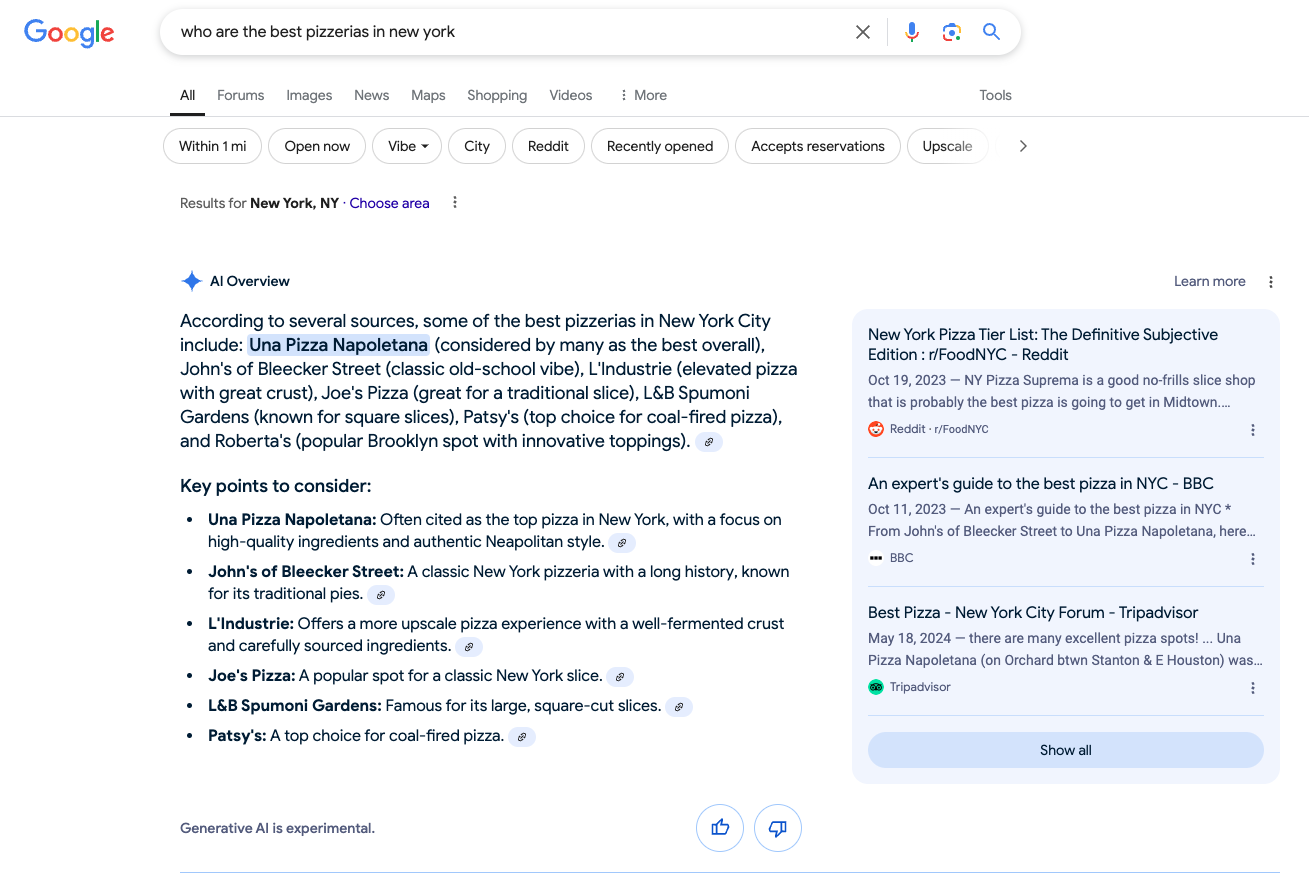
Throughout the generated response you will see links at the end of each sentence or paragraph. These are the citations used in the generated response and these citations can also be seen on the right panel.
The right panel is also where you’ll see all the cited sources compiled in one place as well.
When you hit “Show all” you will get the entire list of pages.
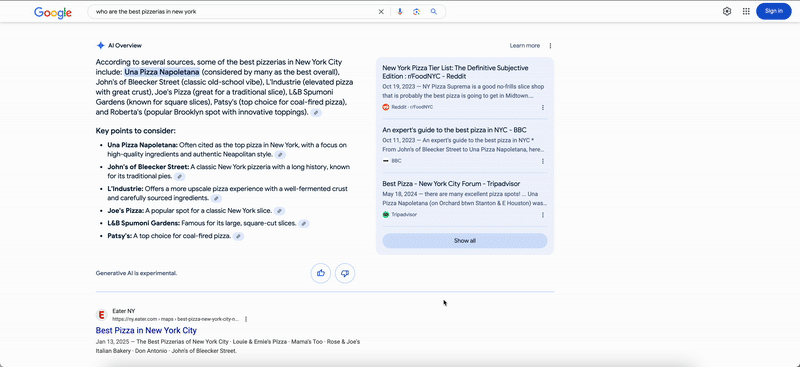
AI Overviews still have buggy performance at times. When looking for ‘who are the best pizzerias in New York’ you get a list of famous pizzerias.
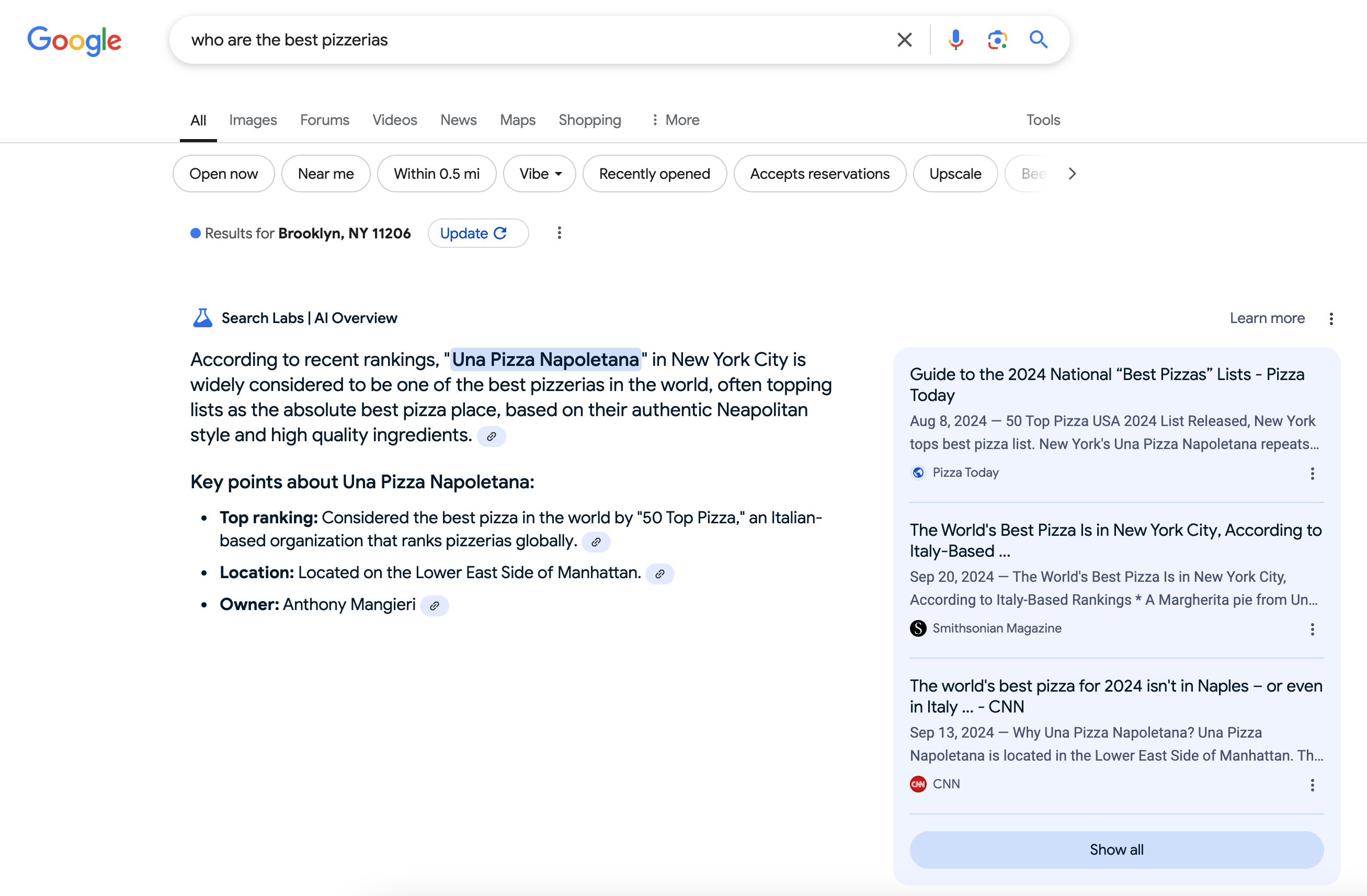
But when I remove the ‘New York’ you’ll see that instead of returning a list, the AI Overview returns with just one pizzeria.
This does show a great example of how AI Overviews, while they have now been rolled out to Google Search to everyone, it does show that there are many changes to anticipate and that what you see today on AI Overviews may not be there tomorrow.
What Type of Queries are Triggering AI Overviews
Currently AIO’s are being triggered predominantly by informational queries and a study done by Ahrefs shows that 99.2% of AIO Keywords are informational.
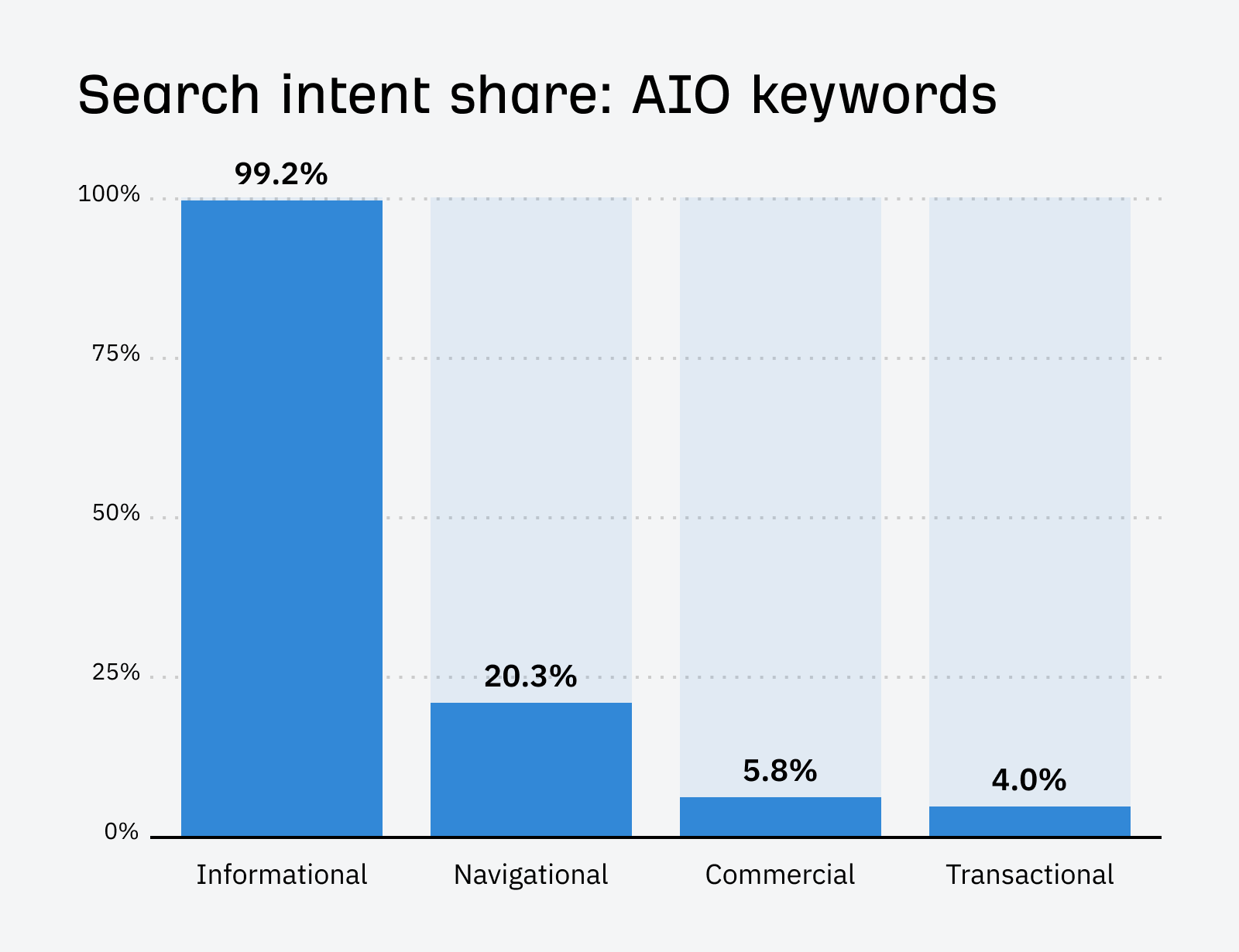
How are AI Overviews Different Than Traditional Search Results
Besides the obvious visual difference of AI Overviews, there is a lot to unpack from how AI Overviews are sourcing their information and returning the result.
What is New?
First and foremost the stat that really drives home the point that AIO SEO is different is this one from that sources and citations used in AI Overview over 66% of the time are pages that do not rank in the top 100 for the query triggering the overview.

Different studies have different numbers, but overall what I’m seeing is that it's pretty much over 50%. So this pretty much means to me, that over half of the success for AIO doesn’t come from traditional SEO.
What is the Same?
On the flip side, anywhere from 35 - 50% of the AI Overview do come from rankings in the top 10. Surfer SEO reports that 52% of sources mentioned by Google AI overviews rank in the top 10 results
So for those who have an existing body of strong SEO work and 1st page rankings, your past work is not for nothing.
How to Rank for Google AI Overviews
The good thing about ranking for AI Overviews is that the foundational actions and resources you need are the same. The overall direction and strategy is what’s different.
The key to ranking for Google AI Overviews right now is centered around the way AI Overviews are displaying the results of their AI Overview responses. Rather than AI Overviews returning an answer to the specific keyword query, AI Overviews are responding to the query and additional questions that it is assuming would follow.
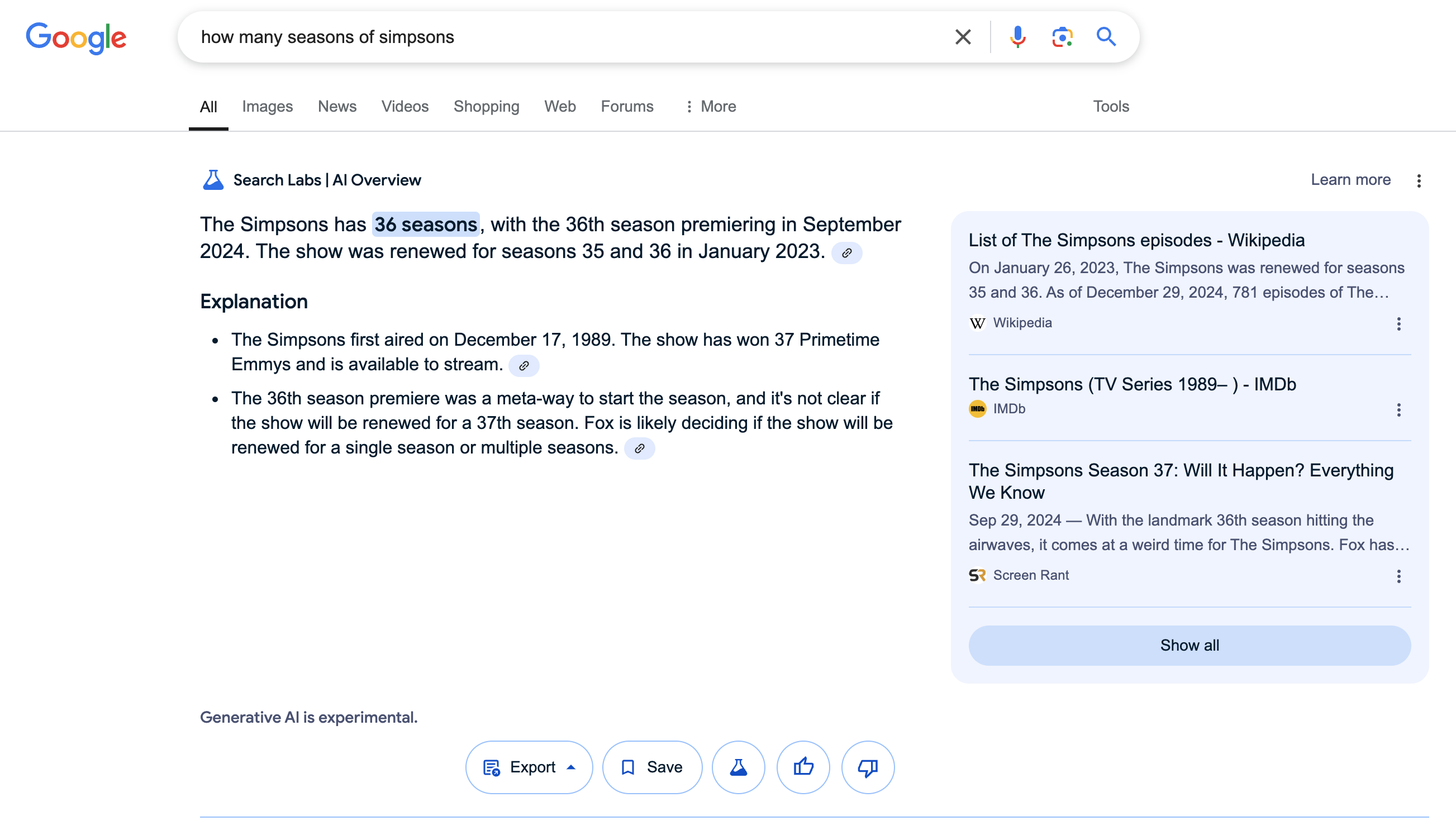
As you can see from the example above, the information provided in the AI Overview response goes beyond just the question of how many seasons of Simpsons there are. We’ll drill down on this more in the “So How Do You Target These AI Overview Positions?” section.
And this is the largest opportunity when it comes to AI Overviews. Does your site offer the best and most relevant answers to the next queries that Google AI Overviews are including in their answers. This also explains why over 50% of the supporting citation links don’t rank for the top 100 results in that query. These are citations answering other questions.
The Sources/Citations are the Targets
According to the results from the Surfer SEO study, AI Overviews on average have 5 sources.
And 90% of the time they have 8 sources or fewer.
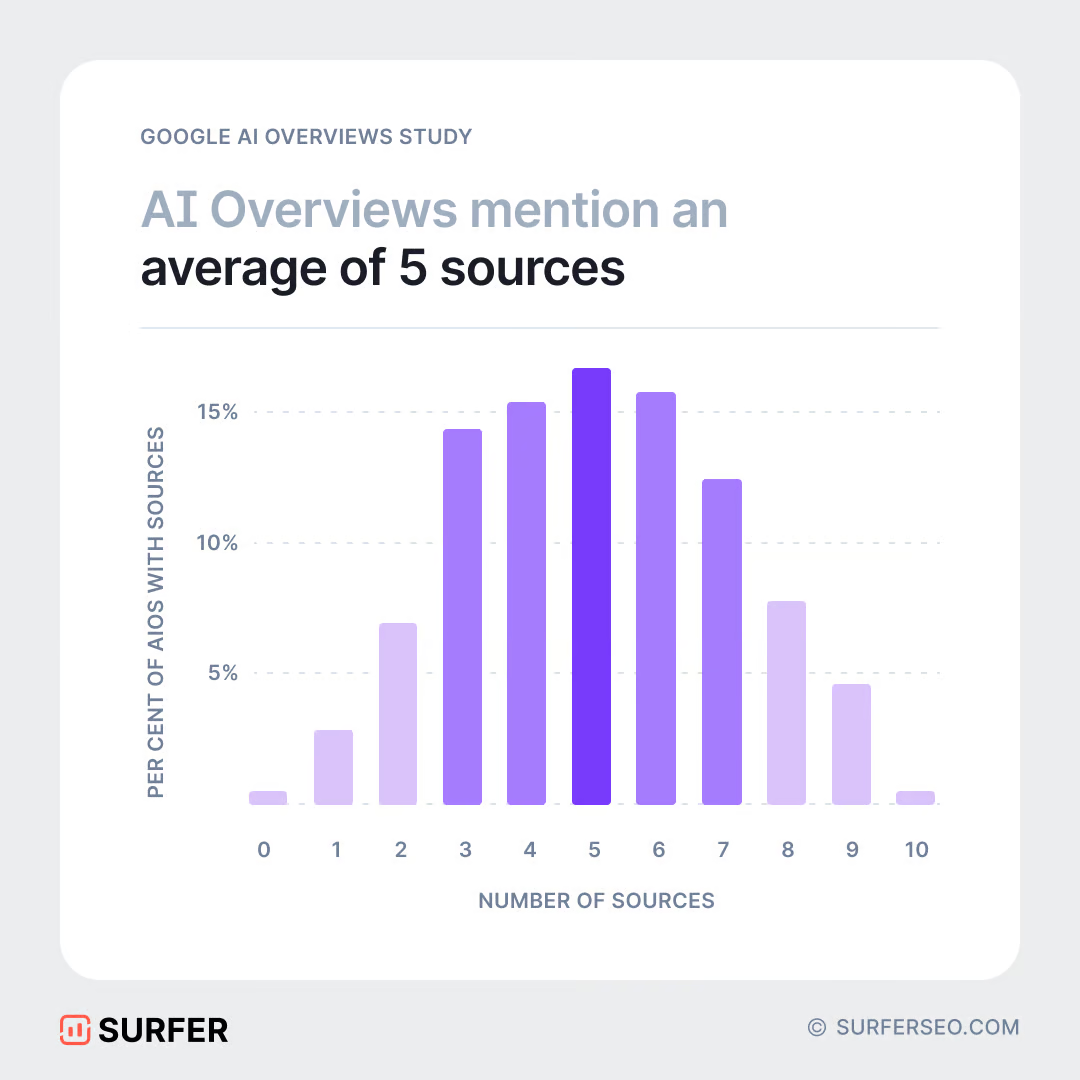
Getting to these sources is the new traditional top 10 results in the SEO game.
So How Do You Target These AI Overview Positions?
The best way to target these is to specifically understand which of the AI Overview sources you want to be the target of.
Top Source Responding to the Main Query
This at its core will be the play that mirrors traditional SEO. Getting to be the source that is responding to the main query will mirror the Featured Snippet SEO play.
At the risk of oversimplifying, the Featured Snippet play is really a play to be the 1st position for a keyword.
This is your best option if you are a site that already dominates and holds many featured snippet positions. If that is the case, you may not even need to do anything because your responses may already be the main source in the featured snippets.
Source for Next Queries
This is the source of most opportunities in AI Overview. In AI Overviews, the generated response is not only answering the query, the response is also answering what they believe will be the user's next question.
Below you can see an informational query asking how many seasons of Simpsons there have been. And you can see that at the very beginning of the response, the AI Overview is answering the query directly.

On the Explanation portion of the AI Overview, this is where you start to see the AI Overview respond beyond the query. In this case, it specifically is providing information on:
- When did the Simpsons first air
- How many awards has the Simpsons won
- Is the show continuing past this season
Below I highlighted over the 2nd bullet point and you can see the specific sources that were cited for the last part of the response.
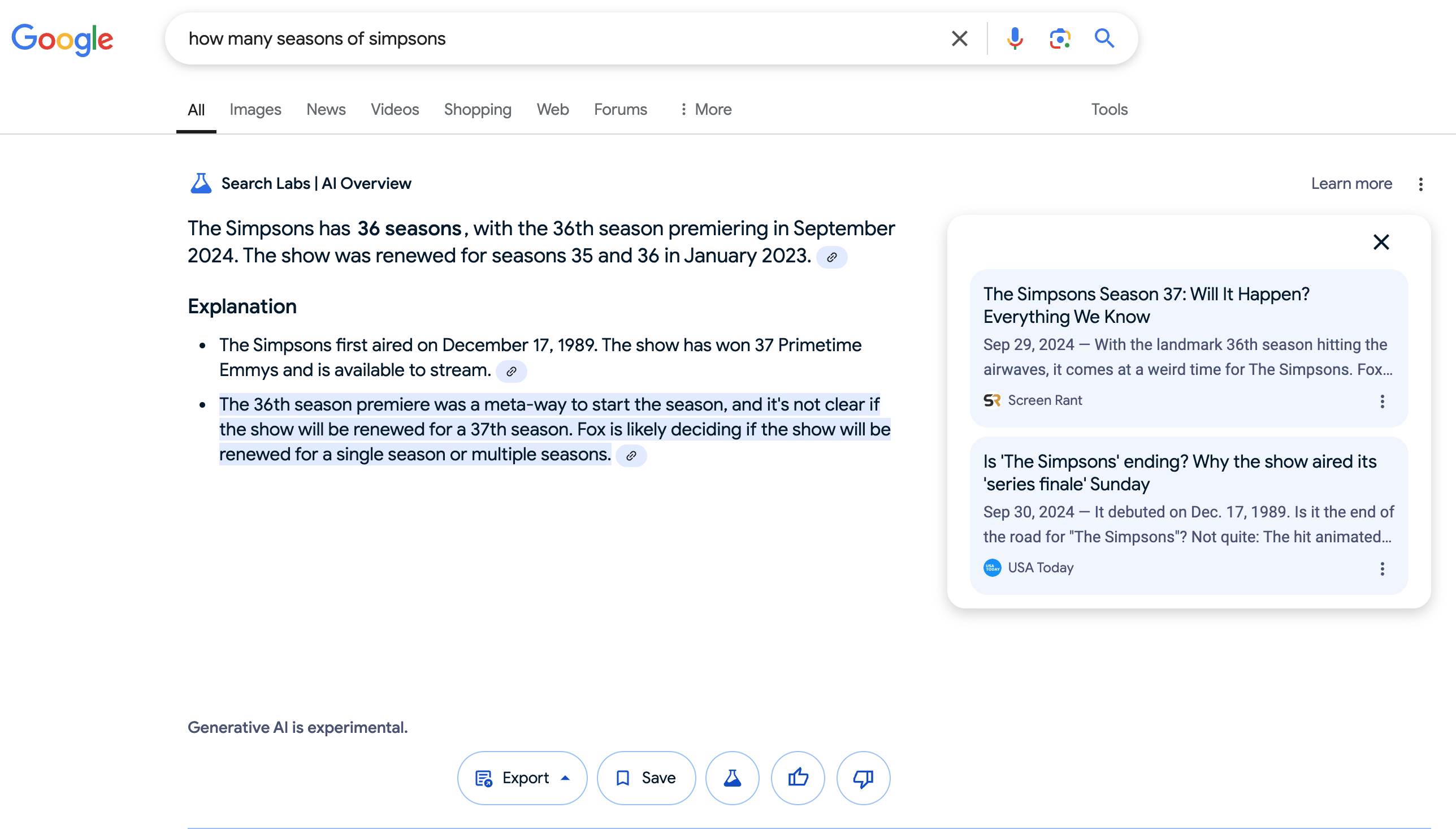
My personal observation is that when Google is pulling these other responses, they are still wanting to cite sources that they trust. In this case, I decided to Google the query that the 2nd bullet point is essentially responding to.
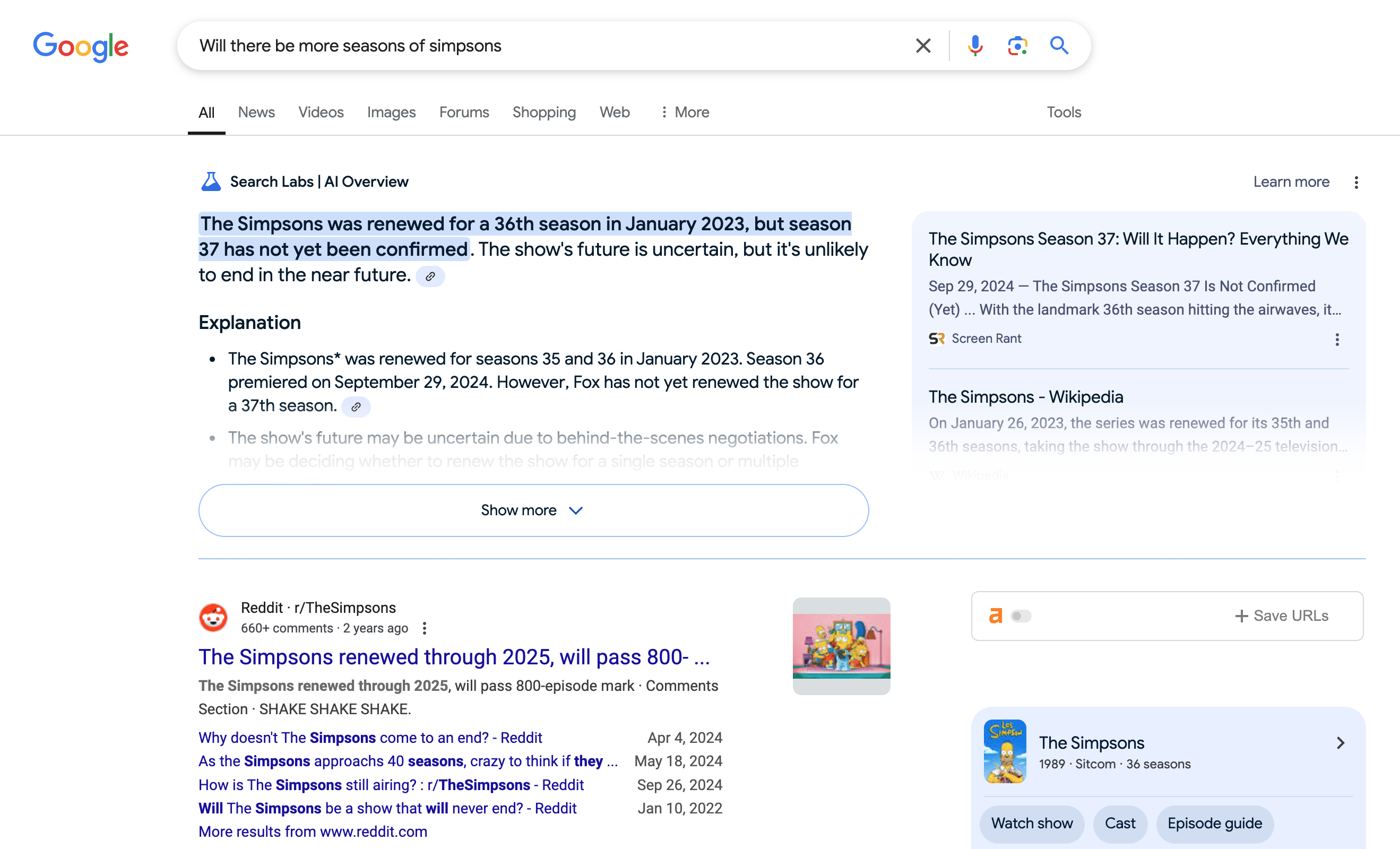
Now to make sense of where I’m going with this, if we scroll down past the AI Overview and the Reddit results you will see:
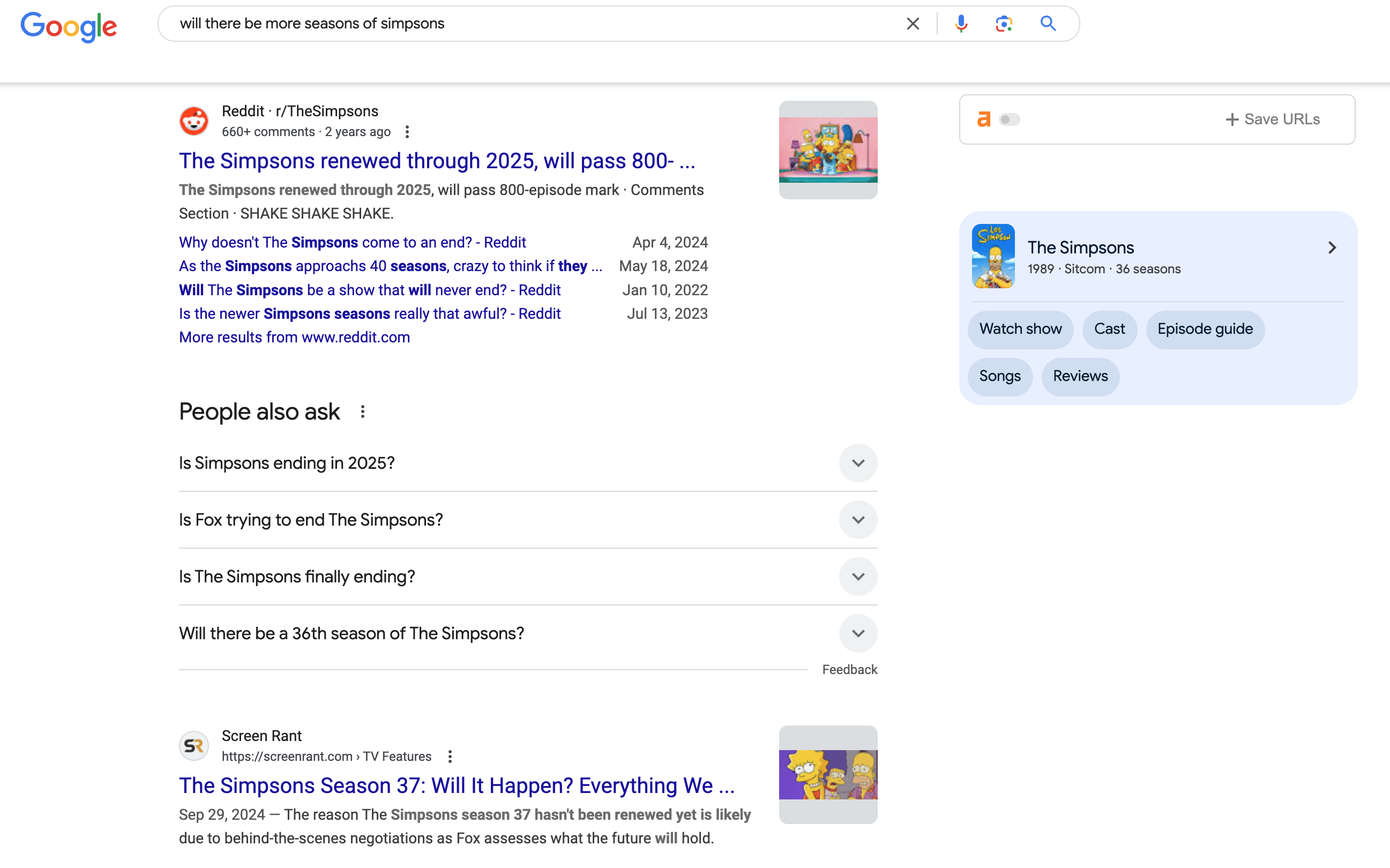
And you can see that the “ScreenRant” source that was in our original AI Overview is the top ranked search after the Reddit post. Quick reminder, that studies of AI Overviews are showing that UGC content like Reddit is not being used as sources for AI Overview, so that explains why the Reddit search result was not used.
This does give us a window in how to target these other spots that are the citations/sources. You have to rank for the next query.
How do you know what the next query is?
In short, look to People Also Ask.
Let’s go back to the original example again, which I have again here:

When we scroll to the traditional results:
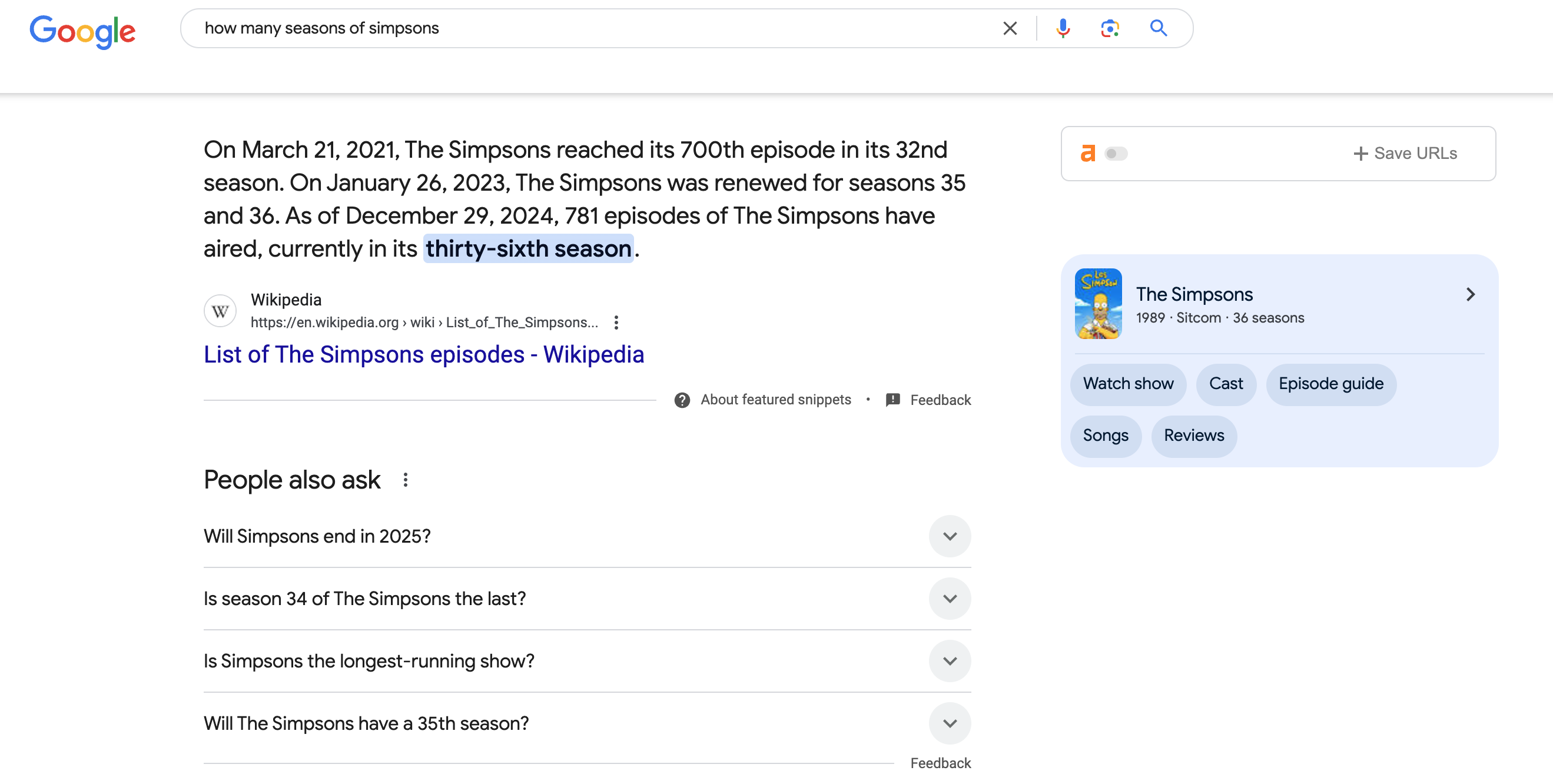
When you look at the People also ask section you will see that the top 2 rows are what were in the additional sources that were used to generate the additional responses.
And that gives us the ability to better plan and optimize for a certain query.
Now on this specific example, things get actually a bit more complex. I did not see the USA Today article when I searched for the 1st two queries in the People Also Ask table, in addition to my search of “Will there be more seasons of simpsons” that I had as an example above.
However, what I did find was that when I did a Google search of “Will Simpsons end in 2025” and looked at it’s People Also Ask it did point me to where the USA Today source was pulled:
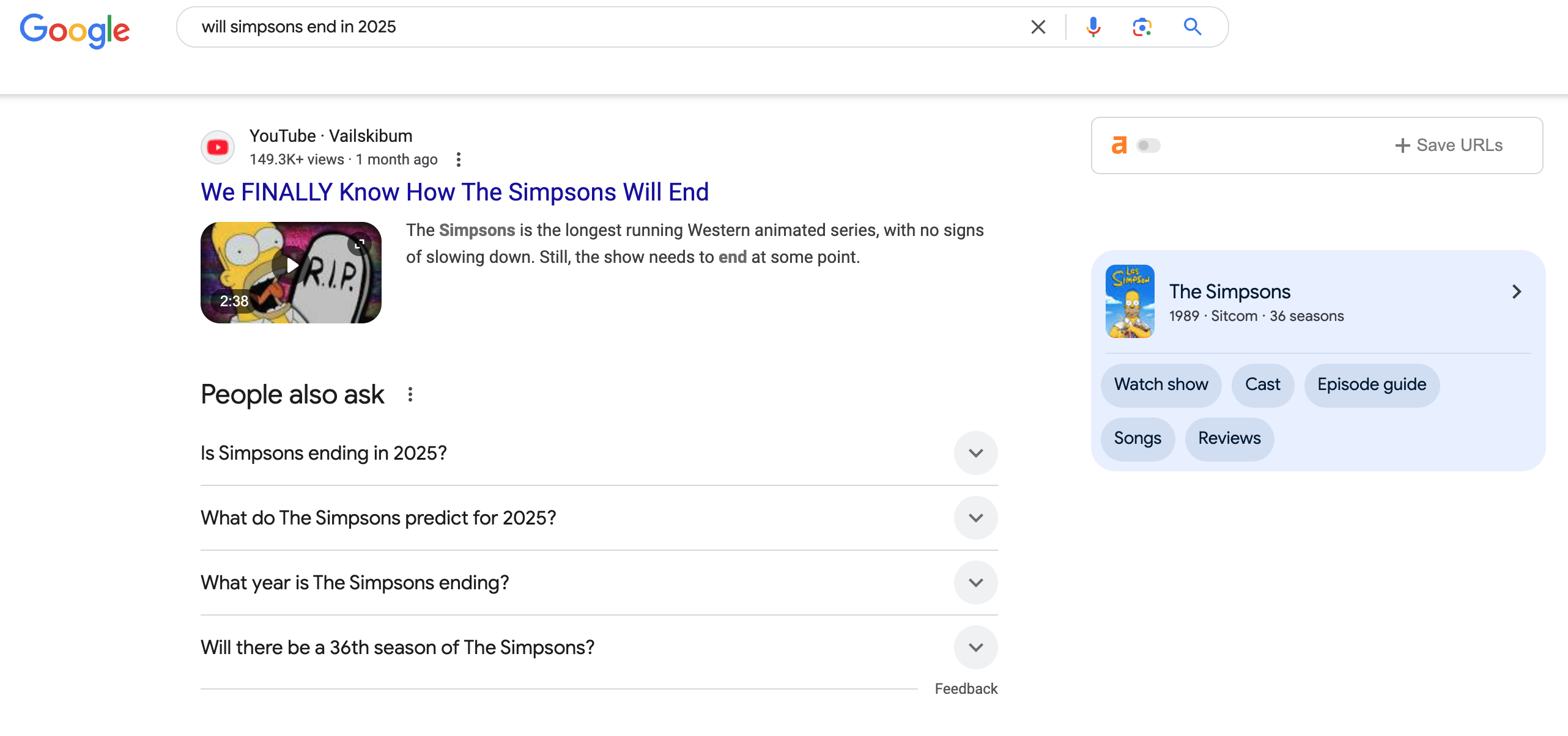
On the “will simpsons end in 2025” search, which remember is the top People also ask row in our original query, you will see that it has it’s own PAA table.
In this one, the first row is the same query, so we can skip that. The 2nd row was not relevant to the USA Today post, however when I Google search the 3rd row you will see that the USA Today is the top result.
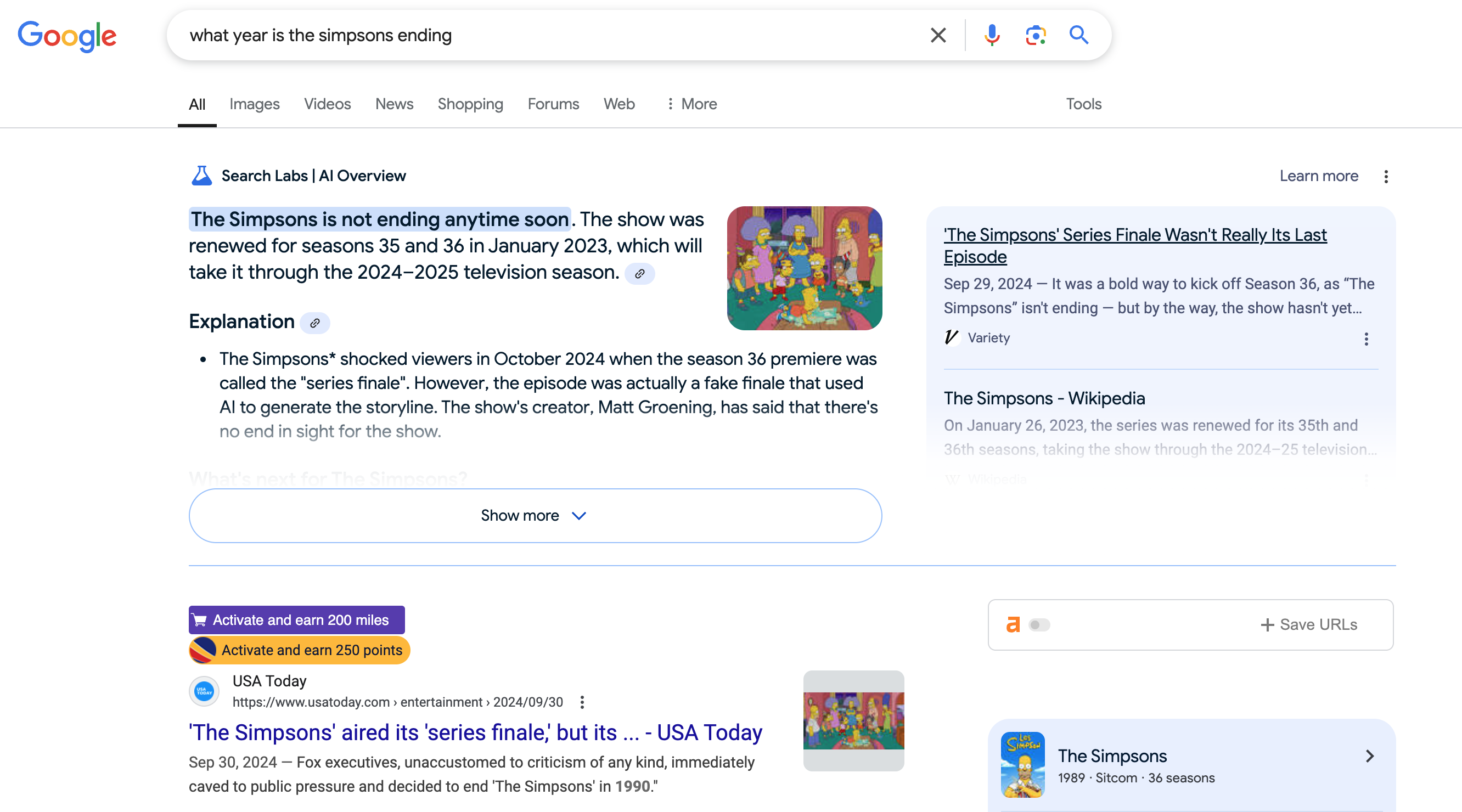
And this wraps up the search for where that source came from.
This shows a direct relation to AI Overview and the traditional Google Search Ecosystem, specifically with Featured Snippets and People also ask. Where marketing teams can find comfort is that all this builds on existing SEO success. Featured Snippets and People also ask have been staples of SEO for probably about 10+ years now and AI Overviews so far seem to be an evolution of these search features.
This does bring back the case for the Hub and Spoke content strategies and ensuring that you are following Semantic SEO best practices to ensure that you are nailing all these PAA’s and relevant queries.
I do have to note that I have not been able to validate this through hundreds or thousands of queries, this has been a personal observation in my day to day use of AI Overview, however, it is something anecdotally that I have seen.
From Here, The Game Follows the Tried and True SEO Playbook
With the pattern identified for these sources, the game then gets more simple. The game then is to ensure that your site has the right pages with the right intent to rank for the main and related queries.
So the good 'ol good content and strong link building.
How to Find Keywords that are Triggering AI Overviews
To find keywords that are triggering AI Overviews, its pretty simple when using common SEO tools. At Zupo we use Ahrefs and SEMRush and both tools have already added the ability to identify keywords that are triggering AI Overviews.
Here’s quick links on how to use their respective tools to find these opportunities.
I didn’t realize that both don’t have dedicated posts that walk you through step by step on how to use the keyword research tools with an AI Overview filter, so if they don’t end up publishing one, I may just quickly draft one up myself.
SEO Philosophy Moving Forward
In the past 5 years there has been a bigger emphasis from Google on the focus of topical authority and credibility, specifically exemplified by E-E-A-T. Pronounced “Double E, A, T”
It merges the importance of linkbuilding with showing experience, expertise, authority and trust in a topic.
And in order to continue to position your site as a whole to be considered for all of these AI overview opportunities, the fundamentals of SEO still need to be accomplished. Specifically you need to be continuing to add to your content library about topics that you want your site and business to be known for. This usually relates to your products and or services. And with what we saw in the Simpsons example in the section right before this, your breadth of content in answering related queries has become even more important.
Then from there, you must ensure that you are building your thought leadership by going out and sharing your knowledge in publications, podcasts, videos, speaking engagements, etc.
There is always a dance when it comes to SEO and this is where you have to dance the fine line between targeting specific queries and their AI Overview, but also nurturing your site for opportunities that you may not be aware of, which is through the continual development of content and building out your topical authority on the site.
